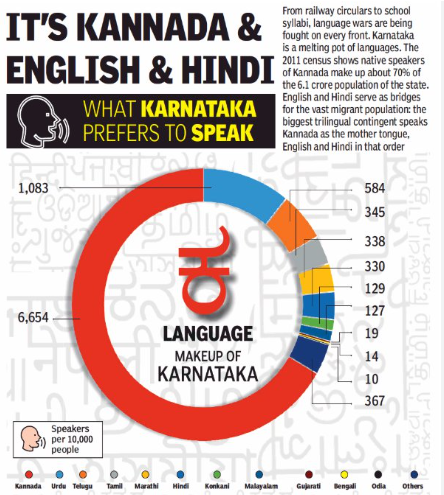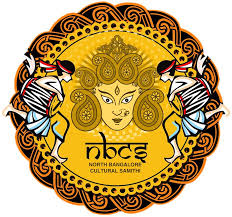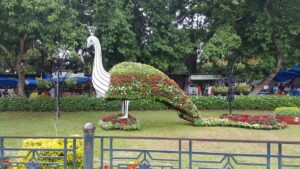
In addition to being India’s IT hub, Bangalore, sometimes called Bengaluru, is a cosmopolitan city that is home to many different cultures, languages, and identities. A symphony of voices speaking various languages, including Hindi, Urdu, English, Malayalam, Tamil, Telugu, Kannada, and more, may be heard whether strolling through its busy marketplaces, tech parks, temples, cafés, or universities.
The city’s urban culture is intricately intertwined with this linguistic variety, influencing how residents live, work, socialise, and celebrate. Bangalore not only accepts but also benefits from linguistic diversity. This blog examines how Bangalore’s urban life is defined and impacted by linguistic variety.
Historical Roots of Multilingualism
The linguistic variety of Bangalore dates back hundreds of years. The city, which was once a Kannada-speaking area, was dominated by several dynasties, including the Cholas, Hoysalas, and subsequently the Mysorean Wadiyars, all of whom influenced the development of the city’s culture and language.
Bangalore was split into two halves during the British era: the Cantonment, which was primarily English and Tamil speaking because of the British troops and Tamil labourers, and the civilian sector, or old Bengaluru, which was primarily Kannada speaking. Two cultures with distinct linguistic preferences, social mores, and urban aesthetics emerged inside the same city as a result of this administrative dualism.
People from all across India moved to Bangalore in search of opportunities after independence due to industrialisation and the IT boom, which broadened the linguistic palette by including layers of Hindi, Marathi, Punjabi, Bengali, Gujarati, and other languages.
The Languages of Bangalore: A Living Mosaic
Here’s a breakdown of the key languages spoken in the city and their social roles:
1. Kannada
Kannada has a distinct significance as the official state language. Street signs, local media, government offices, and educational institutions all use it extensively. Traditional Kannada-speaking people have strongholds in places like Basavanagudi, Jayanagar, and Malleswaram. In addition, Kannada is the dominant language in literature, local festivals, classical music, and theatre.
2. English
English has become the primary language of Bangalore’s corporate and cosmopolitan populace as a result of the IT boom. English is the primary language of most startups, IT firms, and universities. Additionally, it serves as the primary communication tool in internet media, expat communities, and prestigious institutions.
3. Hindi
Hindi is frequently used in business areas, call centres, and construction sites as a result of migration from North India. Despite not being a native tongue, Hindi frequently serves as a language bridge for speakers of other languages.
4. Tamil, Telugu, and Malayalam
Due to proximity to Tamil Nadu, Andhra Pradesh, and Kerala, a significant portion of the population speaks Tamil, Telugu, and Malayalam. Entire neighborhoods like Ulsoor (Tamil), KR Puram (Telugu), and Ejipura (Malayali) reflect these cultural imprints through language, cuisine, and religious practices.
5. Urdu
Bangalore has a vibrant Muslim community, especially in areas like Shivajinagar and Fraser Town, where Urdu is commonly spoken alongside Kannada. Urdu also enriches the city’s poetry, qawwalis, and culinary lexicon.
Language and Urban Identity
In Bangalore, language serves as a symbol of prestige, identity, and belonging in addition to being a means of communication.
- Kannada promotion and preservation are linked to cultural pride and legacy for native Kannadigas. The aim to maintain Kannada’s visibility and relevance in public settings is shown in movements like “Kannadakkagi Naavu” and “Namma Metro should be in Kannada.”
- Being fluent in English (or occasionally Hindi) aids immigrants and expatriates in navigating the labour market and assimilating into global communities.
- Bilingual and trilingual homes are becoming more prevalent, with kids growing up speaking Hindi with friends, Kannada at school, and English at work or online.
As a result, there is a multilingual urban ecology where it is not only normal but often considered hip to jump between languages, frequently in the middle of sentences. Because of this flexibility, hybrid sentences like:
- “I’ll go bartha idini” (mix of English and Kannada)
- “Lunch ke baad hogona?” (Hindi and Kannada)
- “Enga office alli meeting ide” (Tamil, Kannada, and English mash-up)
Language in Arts, Culture, and Entertainment
Language diversity is vividly reflected in Bangalore’s cultural expressions.
Theatre & Literature
- English and multilingual plays are frequently performed at Jagriti theatre and Alliance Française;
- Kannada theatre flourishes at places like Ranga Shankara and KH Kala Soudha.
- Literary festivals like the Bangalore Literature Festival invite writers in a variety of languages, including Hindi, Tamil, Kannada, English, and regional dialects.
Music & Cinema
- At the city’s multiplexes, Hindi, Tamil, Telugu, and Kannada films are all equally well-liked.
- Events such as Hindi open mic poetry, Kannada Sugama Sangeetha, Carnatic concerts, and English indie rock performances are held in music venues such as Bangalore International Centre, Atta Galatta, and Lahe Lahe.
Language in Commerce and Daily Life
Visit any Bangalore street, and you’ll encounter a mix of languages on:
- Shop signage (often in Kannada and English)
- Auto drivers switching between Kannada and Hindi
- Street vendors who understand enough of every major language to serve diverse customers
An example of how multilingualism supports urban survival and service is the fact that even Swiggy delivery personnel, taxi drivers, and baristas frequently speak at least three languages fluently.
Challenges of Linguistic Diversity
Bangalore’s linguistic variety is abundant, yet it’s not without conflict:
- Some Kannada activists contend that the prevalence of Hindi and English diminishes the local tongue;
- Migrants may experience exclusion in government institutions or educational institutions where Kannada is the sole language spoken;
- Misunderstandings in public services can occasionally result from language problems, particularly for immigrants.
There are initiatives underway to advance inclusive language policy, including:
- Dual-language government documents;
- Multilingual metro announcements;
• Kannada study programs for immigrants
Conclusion: A Multilingual City with a Global Soul
Bangalore’s identity as a linguistically diverse urban hub is one of its most defining characteristics. It reflects not just the city’s openness but also its capacity to evolve, adapt, and integrate people from all over the world.
Language here is fluid, layered, and ever-changing—just like the city itself. Whether you’re a Kannadiga preserving your roots, a north Indian navigating the metro, a Malayali chef running a café, or an English-speaking expat building a startup, Bangalore gives you space to belong, in your language.
So, the next time you’re in Bangalore, listen closely—you’ll hear a city speaking in many voices, yet telling one harmonious story of urban diversity and cultural unity.





Leave a Reply